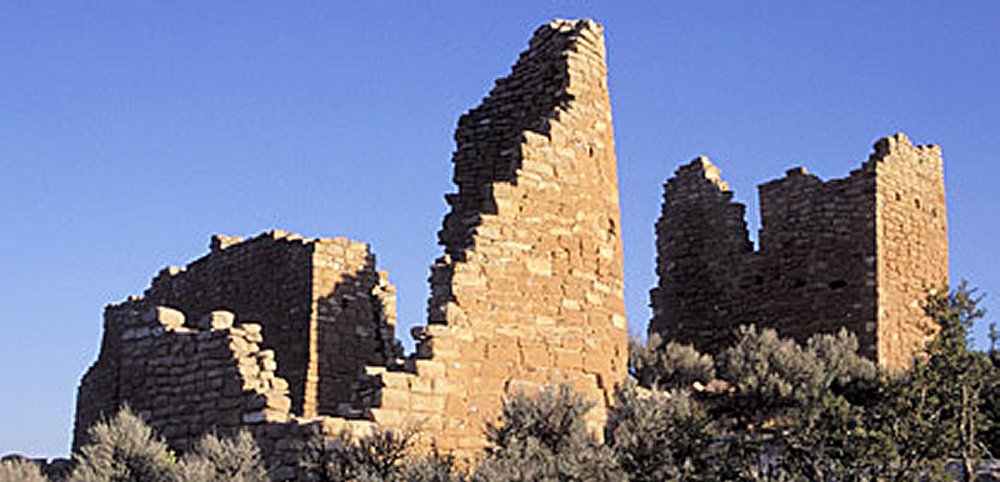Ancient Ruins Of Hovenweep: Impressive Puebloan Masonry
A. Sutherland - AncientPages.com - Hovenweep became a National Monument in 1923, but the site is a very ancient. "Hovenweep" is a Paiute/Ute word meaning "Deserted Valley". It is located along the border between southeast Utah and southwest Colorado, just north and west of Cortez, CO, at an altitude of 5,200 feet.
Humans lived there for more than 10,000 years. Nomadic Paleo-Indians visited the Cajon Mesa of the Great Sage Plain to hunt and gather food. They used the area for centuries, following the seasons.
Then, about 900 AD, the transitional period came and people started to settle at Hovenweep year-round, planting and harvesting crops in the rich soil of the mesa top. They were no longer a traditional hunter-gatherer society but the so-called pueblo people; these early Puebloan cultures settled in the area and remained until the 14th century.
The Ancestral Puebloans inhabited the Four Corners region of Colorado, Utah, New Mexico, and Arizona from about 500 A.D. to 1300 A.D.
By the late 1200s, the Hovenweep area was home to over 2,500 people, who prepared their land for cultivation by creating terraces, building check dams to retain topsoil and storage granaries to protect harvests of corn, beans and squash for later use.
These mysterious people were skillful builders; their masonry is impressive even today.
Most of the structures with a large variety of sizes and shapes were built at Hovenweep between A.D. 1200 and 1300. There are D-shaped dwellings, square and circular towers, and usually circular, ceremonial structures called kivas, which according to archaeologists were associated with the striking towers.
The mysterious Puebloan towers, on the other hand, could have been celestial observatories, defensive structures, storage facilities or civil buildings.

Towers such as the Square Tower are found throughout the canyon and were possibly used for water management, protection, and/or for ceremonial purposes. Courtesy of the National Park Service
It has also been suggested that the placement of these towers had to do with protection of water sources indispensable for the survival.
The most easily accessible part of the Hovenweep National Monument is the Square Tower Unit, which contains most of Ancestral Puebloan structures and among them, there is , for example, Hovenweep Castle, which has several rooms and D-shaped towers.
The slots and doors of Hovenweep Castle, in Square Tower Group, define a solar calendar device used by the builders to reckon the passage of the seasons, important these ancient people and their farming in the harsh climate of the Colorado Plateau.
By the end of the 13th century, the inhabitants of Hovenweep began to leave the area. Though the reason is unclear, ancestral Puebloans throughout the area migrated south to the Rio Grande Valley in New Mexico and the Little Colorado River Basin in Arizona. Today's Pueblo, Zuni and Hopi people are descendants of this culture.
The first historic reports of the abandoned structures at Hovenweep were made by W.D. Huntington, the leader of a Mormon expedition into southeast Utah in 1854.
The name "Hovenweep" was adopted by pioneer photographer William Henry Jackson in 1874. In 1917-18, J.W. Fewkes of the Smithsonian Institution surveyed the area and recommended the structures be protected.
Written by – A. Sutherland AncientPages.com Staff Writer
Copyright © AncientPages.com All rights reserved. This material may not be published, broadcast, rewritten or redistributed in whole or part without the express written permission of AncientPages.com
Expand for referencesMore From Ancient Pages
-
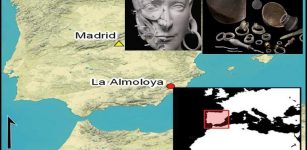 Disappearance Of The El Argar Civilization – Why Has No One Lived In The La Almoloya Region Again?
Civilizations | May 10, 2022
Disappearance Of The El Argar Civilization – Why Has No One Lived In The La Almoloya Region Again?
Civilizations | May 10, 2022 -
 Why Human Languages Can Be Likened To Branches On A Tree And Help Finding A Single Common Ancestor
Linguistic Discoveries | Sep 11, 2021
Why Human Languages Can Be Likened To Branches On A Tree And Help Finding A Single Common Ancestor
Linguistic Discoveries | Sep 11, 2021 -
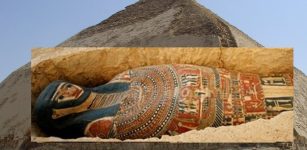 Egypt Opens Two Ancient Pyramids And Unveils Newly Found Sarcophagi And Mummies
Archaeology | Jul 15, 2019
Egypt Opens Two Ancient Pyramids And Unveils Newly Found Sarcophagi And Mummies
Archaeology | Jul 15, 2019 -
 Summer Solstice Festivals Around The World – Midsummer Celebration Is An Ancient Tradition Still Alive
Ancient Traditions And Customs | Jun 21, 2024
Summer Solstice Festivals Around The World – Midsummer Celebration Is An Ancient Tradition Still Alive
Ancient Traditions And Customs | Jun 21, 2024 -
 Land of Israel: A 5,000-Year-Old Settlement And A Pottery Kiln Unearthed Near Beit Shemesh At The Site Of Hurvat Husham
Archaeology | Oct 30, 2024
Land of Israel: A 5,000-Year-Old Settlement And A Pottery Kiln Unearthed Near Beit Shemesh At The Site Of Hurvat Husham
Archaeology | Oct 30, 2024 -
 On This Day In History: Spanish Conquistadors Led By Hernan Cortés Entered The Aztecs Capital Tenochtitlán – On Nov 8, 1519
News | Nov 8, 2016
On This Day In History: Spanish Conquistadors Led By Hernan Cortés Entered The Aztecs Capital Tenochtitlán – On Nov 8, 1519
News | Nov 8, 2016 -
 Facial Reconstruction Of Chinese Emperor Wu Who Lived 1,500 Years Ago
DNA | Mar 29, 2024
Facial Reconstruction Of Chinese Emperor Wu Who Lived 1,500 Years Ago
DNA | Mar 29, 2024 -
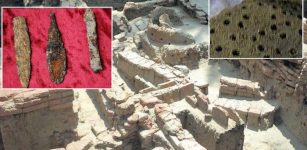 Keeladi, India: Ancient Residents Along Vaigai River Had Adopted Highly Progressive Technologies
Archaeology | Aug 28, 2020
Keeladi, India: Ancient Residents Along Vaigai River Had Adopted Highly Progressive Technologies
Archaeology | Aug 28, 2020 -
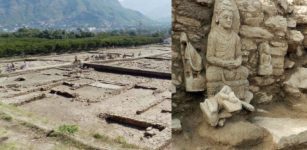 Bazira – Lost City Of Alexander The Great Discovered In Pakistan
Archaeology | May 7, 2019
Bazira – Lost City Of Alexander The Great Discovered In Pakistan
Archaeology | May 7, 2019 -
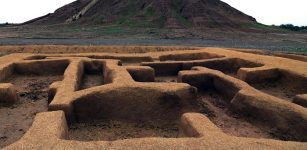 Climate Change May Have Impacted The Rise And Fall Of Middle Eastern Civilizations
Archaeology | Jan 19, 2023
Climate Change May Have Impacted The Rise And Fall Of Middle Eastern Civilizations
Archaeology | Jan 19, 2023 -
 Ancient Mystery Of The Unknown White Bearded Rulers
Ancient Mysteries | Apr 21, 2020
Ancient Mystery Of The Unknown White Bearded Rulers
Ancient Mysteries | Apr 21, 2020 -
 Unexplained Lights Over English City Reported By Police May Have A Deeper Meaning
Featured Stories | Dec 11, 2019
Unexplained Lights Over English City Reported By Police May Have A Deeper Meaning
Featured Stories | Dec 11, 2019 -
 Neanderthals Died Out 40,000 Years Ago, But There Has Never Been More Of Their DNA On Earth
Archaeology | Sep 6, 2022
Neanderthals Died Out 40,000 Years Ago, But There Has Never Been More Of Their DNA On Earth
Archaeology | Sep 6, 2022 -
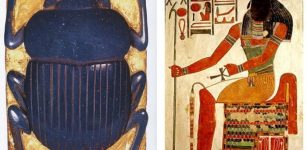 Khepri – Egyptian Progenitor God, Spirit Of Life, Resurrection And The Rising Sun
Egyptian Mythology | May 14, 2020
Khepri – Egyptian Progenitor God, Spirit Of Life, Resurrection And The Rising Sun
Egyptian Mythology | May 14, 2020 -
 Cupbearer Was Privy To Conversations And Political Secrets Hidden Behind Closed Doors
History | Feb 3, 2025
Cupbearer Was Privy To Conversations And Political Secrets Hidden Behind Closed Doors
History | Feb 3, 2025 -
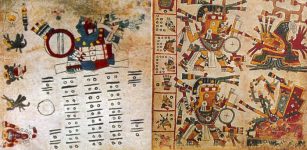 Ancient Codex Cospi: Intriguing Pre-Columbian Ritual Manuscript From Central Mexico
Featured Stories | Aug 10, 2017
Ancient Codex Cospi: Intriguing Pre-Columbian Ritual Manuscript From Central Mexico
Featured Stories | Aug 10, 2017 -
 Astronomer Johannes Kepler Saved His Mother From Being Burned As A Witch
Featured Stories | Jan 21, 2017
Astronomer Johannes Kepler Saved His Mother From Being Burned As A Witch
Featured Stories | Jan 21, 2017 -
 Lost Ancient Pyramid City As Big As Manhattan Discovered In Mexico
Archaeology | Feb 17, 2018
Lost Ancient Pyramid City As Big As Manhattan Discovered In Mexico
Archaeology | Feb 17, 2018 -
 The Brujo De Chiloé – The Wild Warlocks Of The Chiloé Archipelago
Featured Stories | May 4, 2022
The Brujo De Chiloé – The Wild Warlocks Of The Chiloé Archipelago
Featured Stories | May 4, 2022 -
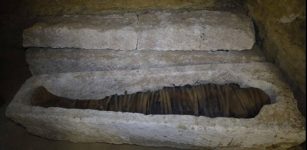 Tombs With Sarcophagi Of High Priests Including One Dedicated To Sky God Horus Unearthed In Egypt
Archaeology | Jan 31, 2020
Tombs With Sarcophagi Of High Priests Including One Dedicated To Sky God Horus Unearthed In Egypt
Archaeology | Jan 31, 2020



